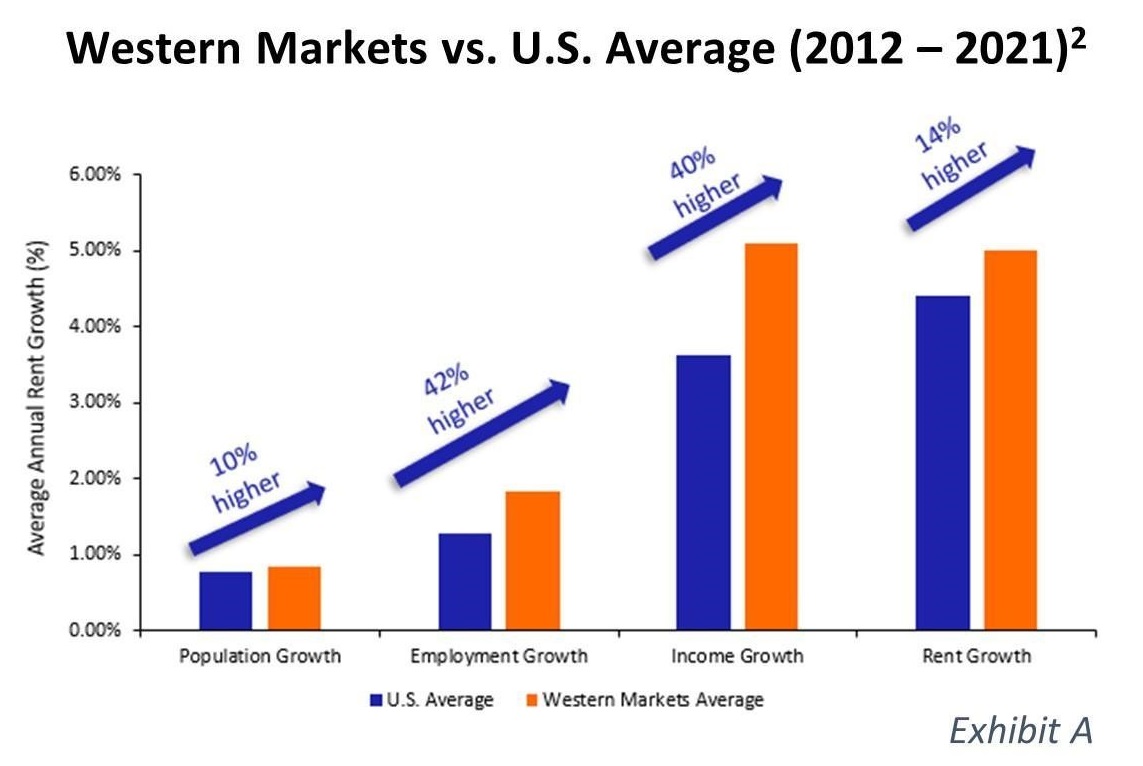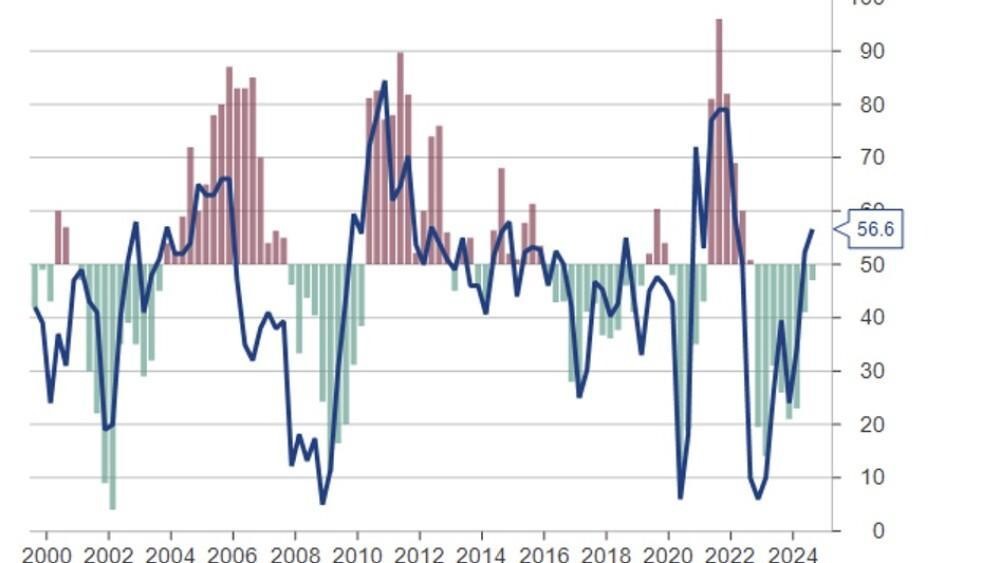
9 Must-Know Market Signals for Multifamily Investors: 2025 Deal Finding Guide
Must-Know Market Signals for Multifamily Investors: 2025 Deal Finding Guide. Multifamily investors face a critical challenge in 2025: separating profitable opportunities from potential pitfalls in an increasingly complex market.
The days of straightforward deal evaluation are over. Market volatility, shifting demographics, and economic uncertainties have created a landscape where traditional analysis methods fall short. However, successful investors know that hidden opportunities still exist - if you know where to look.
That's why we've identified 9 essential market signals that help cut through the noise. These proven indicators form the backbone of any successful multifamily investment strategy, helping you spot promising deals before your competition. Whether you're a seasoned investor or just starting out, these signals will serve as your roadmap for making informed investment decisions in 2025.
Cap Rate Compression Signals

Image Source: Freddie Mac Multifamily
Cap rate trends serve as crucial indicators for multifamily investors seeking to gage market dynamics and property valuations. Initially, data shows industrial and multifamily cap rates are expected to compress by 30 and 17 basis points respectively in 2025.
Understanding Cap Rate Trends in 2025
Cap rates have stabilized between 5.6% and 5.7% during the first nine months of 2024. Subsequently, the spread between cap rates and 10-year Treasury rates has compressed to approximately 120 basis points, notably below the historic average of 300 basis points.
Cap Rate Analysis Tools and Metrics
Multifamily investors analyze several key metrics to evaluate cap rate movements:
Net Operating Income (NOI) to purchase price ratio
Market-specific cap rate spreads
Historical cap rate comparisons
Property class variations
Cap Rate Warning Signs to Watch
Property values have declined for nine consecutive quarters since mid-2022, dropping nearly 20%. Furthermore, markets experiencing significant cap rate compression require careful analysis. For instance, Sun Belt markets that saw dramatic price increases during the pandemic now face increased risks, with cities like Raleigh/Durham, Atlanta, and Dallas seeing property prices fall 40% or more since mid-2022.
Consequently, while cap rate compression signals strong investor confidence in certain markets, it additionally highlights potential risks in others. Markets with cap rate spreads closing in on primary market levels deserve particular scrutiny.
Supply-Demand Equilibrium Indicators

Image Source: Houston Real Estate
Analyzing supply-demand equilibrium stands as a cornerstone of successful multifamily investment decisions. The current market shows over 730,000 units expected to complete in 2024, marking a potential record year.
Supply Pipeline Analysis Methods
Effective supply analysis requires tracking both current and planned developments. According to recent data, Dallas leads with 55,212 units under construction, followed by New York with 53,330 units, and Phoenix with 51,208 units. Moreover, the national pipeline remains elevated with 1,213,000 multifamily units currently underway.
Demand Forecasting Techniques
Demand forecasting primarily relies on three core variables:
Job growth metrics
Single-family housing affordability indicators
New supply measurements across residential sectors
The jobs-to-permits ratio, specifically, serves as a vital indicator, with markets maintaining a ratio above 5.0 showing particularly strong fundamentals.
Market Absorption Rate Metrics
Absorption rates measure the pace at which available units are occupied in specific markets. According to current data, a high absorption rate above 20% indicates a seller's market with rapid unit absorption, whereas rates below 15% suggest slower market conditions. Particularly, markets like Austin demonstrate this dynamic, absorbing over 80,000 units despite delivering 30,186 new units from 2014 to 2016.
The equilibrium between supply and demand continues shifting, as evidenced by the National Multifamily Housing Council's projection of needing 4.3 million additional apartment units by 2035. This forecast includes 600,000 units to address the deficit from post-2008 underbuilding.
Rental Rate Movement Patterns

Image Source: Moody's CRE
Rental rate patterns reveal crucial insights for multifamily investors navigating market dynamics. Presently, national average asking rents show minimal growth of 0.2% year-over-year as of May 2024.
Rent Growth Analysis Tools
Advanced analytics platforms track real-time rental movements across markets. Currently, the median monthly rent stands at USD 1,373, marking a 0.6% decline from the previous month. The Sun Belt region faces particular pressure, with rents declining 2.2% year-over-year.
Rental Market Competition Metrics
Occupancy rates serve as primary indicators of market competitiveness. The national vacancy index has reached 6.8%, the highest level since the pandemic's onset. In addition, markets with elevated supply ratios experience greater downward pressure on rents, as demonstrated in the Mountain West where a 4.4% inventory ratio correlates with a 0.6% rent decline.
Price-to-Rent Ratio Signals
Price-to-rent ratios offer valuable insights into market valuation. As a result of recent market shifts, the median ratio has fluctuated significantly, ranging from under 13 in stable periods to reaching 16 during market peaks. Overall, markets with price-to-rent ratios exceeding 25 primarily signal potential overvaluation, warranting careful analysis by investors.
The Midwest and Northeast regions maintain positive rent growth at 2.7% and 2.4% respectively. This trend is driven by secondary markets experiencing increased demand coupled with limited new supply.
Population Migration Trends

Image Source: TEXPERS
Migration patterns across the United States reveal transformative shifts shaping multifamily investment opportunities. Recent data indicates that urban-to-suburban migration patterns have primarily reverted to pre-pandemic norms.
Migration Pattern Analysis Tools
Current migration tracking shows the Sun Belt and Mountain West regions experiencing substantial population influx, with metros like Austin, Phoenix, and Jacksonville leading the movement. Evidently, these regions face unique challenges as they simultaneously attract the highest supply ratios of 6.2% compared to the 2015-2019 average of 3.1%.
Employment Growth Indicators
Job growth remains a fundamental driver of migration patterns, with an average of 180,000 monthly positions added through October 2024. Essential migration magnets include:
Texas metros projecting 1.0-2.0% job growth
Orlando anticipating robust employment expansion
Phoenix maintaining strong workforce development
Demographic Shift Metrics
Markedly, demographic data reveals that Baby Boomers are turning 65 at a rate of 10,000 per day, with projections showing one in three households will be headed by someone 65 or older by 2035. This aging population trend has triggered a 38% increase in renters aged 55 and above between 2007 and 2017.
The impact on multifamily demand varies by region, with undersupplied markets like New York, Los Angeles, and Chicago showing potential shortages by 2025. These demographic shifts have prompted a 65% surge in renters aged 65 and above, fundamentally altering the multifamily landscape.
Economic Health Markers

Image Source: Urban Land Magazine - Urban Land Institute
First and foremost, economic health markers serve as vital benchmarks for multifamily investors evaluating market opportunities. Recent data indicates GDP growth of 2.8% in the third quarter of 2024, underpinning robust economic activity.
Local Economic Indicators
The national economy maintains steady momentum, with consumer spending and federal government expenditure driving growth. Therefore, multifamily markets in regions like Boston demonstrate resilience through dynamic workforce engagement. Similarly, markets including Chicago exhibit stable performance heading into 2025, with healthy property value preservation.
Job Market Growth Metrics
Employment data reveals significant regional variations in growth prospects. Key metrics include:
Northeast and gateway markets projecting 1-2% job expansion
Midwest cities anticipating moderate growth
Sun Belt regions forecasting above-average employment gains
Income Level Analysis
Wage growth has exceeded expectations, climbing 4.4% annually. This trend affects rental affordability across markets, with areas maintaining strong median incomes ensuring tenants can afford rental rates at three times monthly income levels. Correspondingly, markets like Minneapolis demonstrate sustained demand despite gaining over 20,000 new apartment units, primarily due to solid income fundamentals.
The correlation between economic health and multifamily performance remains pronounced, as evidenced by the 2.6% projected average annual rent growth for 2025. Fundamentally, markets with diverse employment bases and stable income growth continue attracting substantial investment activity.
Construction Cost Indicators

Image Source: Commercial Search
Construction costs emerge as pivotal indicators shaping the landscape of multifamily development in 2025. Recent data reveals a 14.1% year-over-year increase in construction costs through 2022, with projections showing stabilization between 2-4% for 2024.
Material Cost Trend Analysis
Material prices demonstrate varying patterns across different components. Essentially, structural steel, framing lumber, and conduit costs have decreased compared to the previous year. Nevertheless, fiberglass insulation costs surged by more than 20%, primarily driven by credits from the Inflation Reduction Act.
Labor Market Assessment
The construction industry faces substantial workforce challenges. Undeniably, 93% of construction firms report openings for craft laborers, with 91% struggling to fill these positions. Rather than following national trends, construction wage growth has lagged, prompting higher escalation rates in 2024.
Construction Pipeline Metrics
Pipeline metrics indicate significant regional variations. The following markets lead in construction activity:
Dallas with 55,212 units under construction
New York following at 53,330 units
Phoenix maintaining 51,208 units
Certainly, by mid-2025, multifamily construction starts are projected to decline 74% below their 2021 peak and 30% below pre-pandemic averages. Thereafter, strong renter demand will likely drive vacancy rates lower, leading to above-average rent growth in 2026.
The impact of these indicators varies geographically, with markets further from the Mississippi River and major manufacturing centers generally experiencing higher material and labor costs. Soon, the trend toward onshore and near-shore suppliers may help stabilize pricing compared to previous market volatility.
Interest Rate Impact Signals
Interest rates stand at the forefront of multifamily investment decisions in 2025, with the Federal Reserve initiating its first rate cuts since 2020. The Fed lowered its benchmark by 25 basis points in November, bringing the target federal funds range to 4.50%–4.75%.
Rate Trend Analysis Tools
Multifamily investors primarily track two key rate indicators. The 30-year fixed-rate mortgage average currently exceeds the effective interest rate on mortgage debt by 52.8%. Indeed, debt origination activity in the third quarter of 2024 marked its strongest performance since 2022, with year-to-date volume increasing 8.5%.
Financing Cost Indicators
The lending landscape reveals shifting patterns across various sources:
GSEs and banks remain dominant lenders despite 13% and 23% year-over-year declines
Financial firms, CMBS, and insurance companies offset the lending shortfall
Private equity and alternative lenders expand market presence
Debt Market Assessment
The debt market shows signs of stabilization, with cap rates averaging 5.7% compared to an average interest rate of 5.2%, resulting in positive leverage of 49 basis points. Ultimately, dry powder at closed-end funds has decreased 11.7% from its December 2022 peak, reflecting declines across value-add, opportunistic, and debt funds.
Looking ahead, futures markets anticipate an additional 75 to 100 basis points in rate cuts through December 2024. Hence, this gradual easing cycle aims to balance employment with inflation targets while maintaining economic stability.
Occupancy Rate Patterns

Image Source: CRE Daily
Occupancy patterns provide multifamily investors with critical insights into market performance and investment potential. The national apartment occupancy rate stands at 94.2% as of May 2024, marking a 10 basis point increase from March.
Vacancy Trend Analysis
Regional variations paint a nuanced picture of market health. Primarily, markets demonstrate distinct occupancy patterns:
West Coast maintains highest rates at 97%
Northeast follows at 96.4%
Sun Belt region shows pressure at 94.1%
Mountain West experiences challenges at 93.2%
Tenant Retention Metrics
Tenant retention rates consistently influence property performance, with the national average reaching 56% in 2023. Alternatively, research indicates that 68% of move-outs stem from customer service issues, while merely 9% relate to pricing concerns. The average cost of tenant turnover exceeds USD 4,000 per unit.
Lease-Up Rate Indicators
Lease-up velocity varies significantly across markets. Concurrently, data shows first-time lease rates achieving stabilization within 12-18 months in well-positioned properties. Markets experiencing high supply volumes, such as Austin and Nashville, demonstrate longer lease-up periods, ultimately requiring 18-24 months to reach stabilization.
The impact of these patterns becomes apparent through occupancy premiums, with Class A properties commanding 94% occupancy despite new supply pressures. Properties maintaining strong customer service metrics experience three times higher lease renewal probability.
Property Value Appreciation Signals

Image Source: Yield PRO
Property values in the multifamily sector demonstrate dynamic shifts, with prices falling 16.1% since their 2022 peak.
Value Growth Analysis Tools
Advanced analytics platforms track value appreciation through multiple metrics. Currently, the most effective tools measure:
Net operating income trends
Historical price movements
Capitalization rate spreads
Demographic impact factors
Fundamentally, these tools reveal that multifamily properties now stand slightly below trend lines, primarily influenced by shifting market conditions and interest rate fluctuations.
Market Comparison Metrics
Comparative analysis shows substantial regional variations in property values. The Mountain West region faces particular challenges, with a 4.4% inventory ratio correlating to declining values. Alternatively, markets like Minneapolis demonstrate resilience, absorbing over 20,000 new units while maintaining stable valuations.
Price Trend Indicators
Price movements consistently reflect broader market dynamics. The data indicates that Sun Belt markets, which experienced dramatic price increases during the pandemic, now face significant corrections, with cities like Raleigh/Durham, Atlanta, and Dallas seeing property values decline 40% or more since mid-2022.
Ultimately, markets maintaining strong price-to-rent ratios below 15 show promising investment potential. The correlation between property values and market fundamentals remains pronounced, as evidenced by the 2.6% projected average annual appreciation for 2025.
Conclusion
Successful multifamily investment decisions in 2025 demand careful analysis of multiple market signals. Data shows significant regional variations, with Sun Belt markets experiencing corrections while Northeast and Midwest regions demonstrate resilience. Property values have declined 16.1% since their 2022 peak, creating opportunities for strategic investors.
Market fundamentals point toward stabilization through 2025. Cap rates hovering between 5.6% and 5.7%, combined with projected Fed rate cuts, signal improved conditions for deal-making. Strong renter demand persists despite elevated supply levels, particularly evident through the need for 4.3 million additional units by 2035.
Smart investors will focus on markets showing positive job growth, stable occupancy rates above 94%, and sustainable rent-to-income ratios. Markets maintaining price-to-rent ratios below 15 offer promising investment potential, especially when paired with diverse employment bases and solid income fundamentals.
These nine market signals serve as essential tools for identifying profitable opportunities while avoiding overheated markets. Careful analysis of these indicators, combined with local market knowledge, helps investors make data-driven decisions that maximize returns in today's complex multifamily landscape.
Ready to Take Control of Your Retirement?
Don’t leave your future up to chance. Multi-family real estate can provide the consistent income and wealth-building opportunities you need to retire on your terms.
👉 Click here to stay informed about multi-family strategies, or sign up here to be notified about upcoming investment opportunities.
Let’s start building a future you can count on! 💼💰
